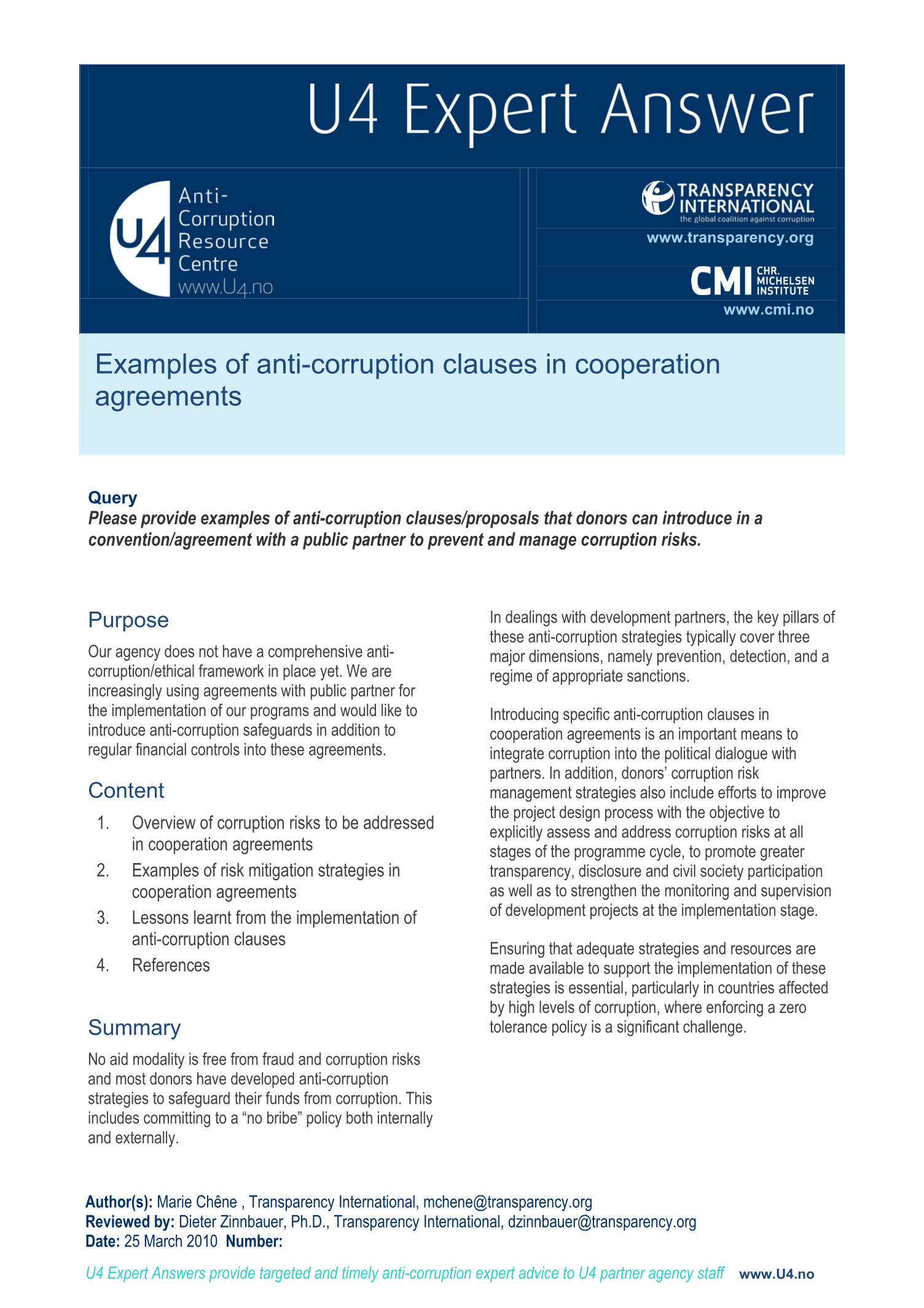U4 Helpdesk Answer
Examples of anti-corruption clauses in cooperation agreements
No aid modality is free from fraud and corruption risks and most donors have developed anti-corruption strategies to safeguard their funds from corruption. This includes committing to a “no bribe” policy both internally and externally. In dealings with development partners, the key pillars of these anti-corruption strategies typically cover three major dimensions, namely prevention, detection, and a regime of appropriate sanctions. Introducing specific anti-corruption clauses in cooperation agreements is an important means to integrate corruption into the political dialogue with partners. In addition, donors’ corruption risk management strategies also include efforts to improve the project design process with the objective to explicitly assess and address corruption risks at all stages of the programme cycle, to promote greater transparency, disclosure and civil society participation as well as to strengthen the monitoring and supervision of development projects at the implementati

Cite this publication
Chêne, M. (2010) Examples of anti-corruption clauses in cooperation agreements. Bergen: U4 Anti-Corruption Resource Centre, Chr. Michelsen Institute (U4 Helpdesk Answer null)
Disclaimer
All views in this text are the author(s)’, and may differ from the U4 partner agencies’ policies.
This work is licenced under a Creative Commons Attribution-NonCommercial-NoDerivatives 4.0 International licence (CC BY-NC-ND 4.0)


